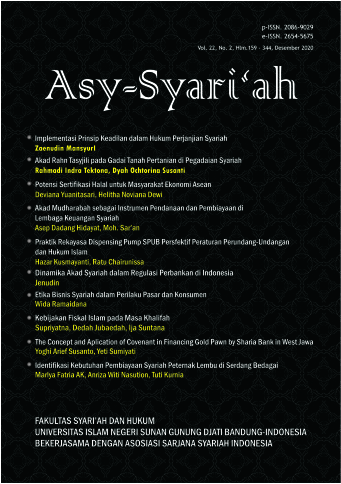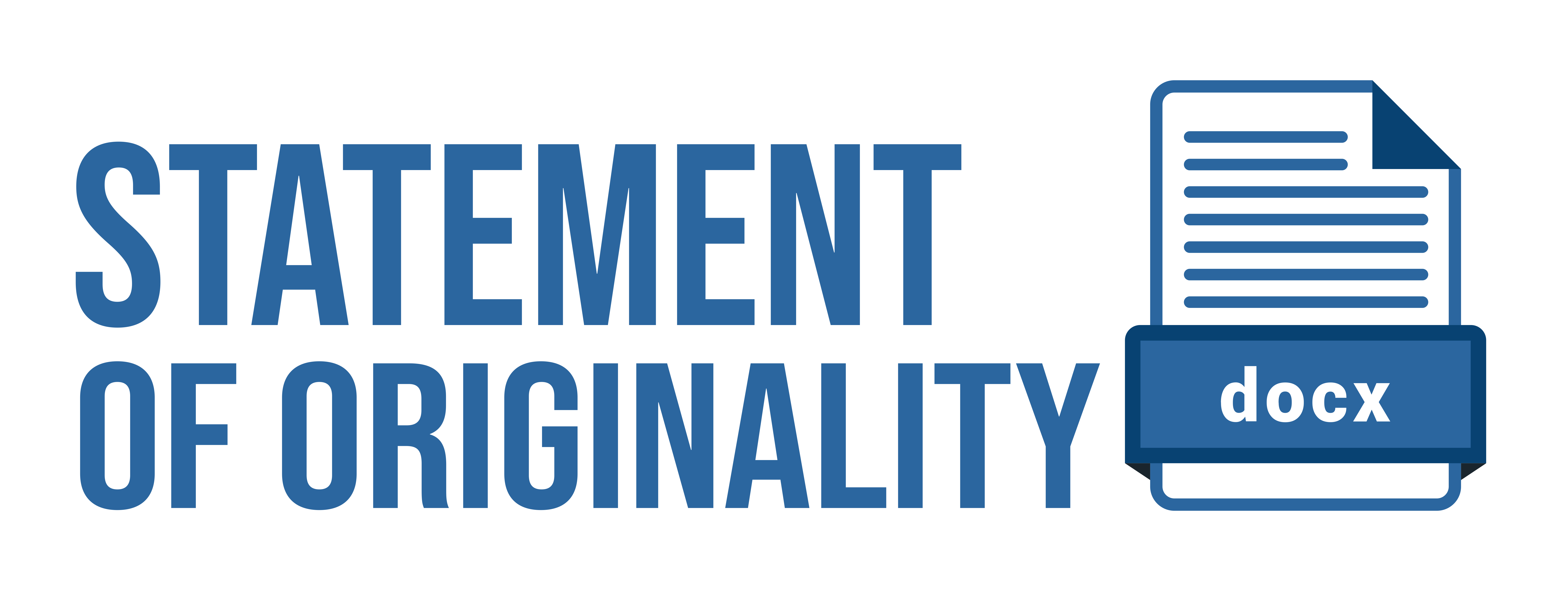TRANSGENDER DAN REDEFINISI KHUNTSA DALAM KAJIAN MEDIS DAN FIQIH KONTEMPORER: STUDI KASUS APRILIO MANGANANG-AMAR ALFIKAR
DOI:
https://doi.org/10.15575/as.v24i1.16513Keywords:
transgender, khuntsa, Islamic law, medic, psychology.Abstract
This research, which examines transgender and khuntsa in contemporary fiqh and medic, is inspired by the news on Aprilio Manganang and Amar Alfikar, who changed their gender due to medical and psychological problems. Aprilio was diagnosed with hypospadias, while Amar suffered from gender dysphoria. In classical fiqh literature, the concept of khuntsa is identified from a physical point of view only, which is generally categorized into khuntsa ghairu musykil if the person's gender can still be known and khuntsa musykil if the genitals cannot be ascertained after a medical research process. The purpose of this study is to determine the fiqh review of the transgender cases of Aprilio Manganang and Amar Alfikar. Using the library research method, this study finds that Aprilio is considered a khuntsa ghairu musykil because of hormonal and physical tendencies to men. While Amar, although born with female genital, gender dysphoria makes her feel that she is in an inappropriate body, thus causing self-harming. In the perspective of contemporary fiqh with psychological approach, the problem experienced by Amar require scholars to review the definition of khuntsa. The criteria of khuntsa musykil can be expanded by considering psychological disorders that arise from internal issues, not due to external influences.
Penelitian yang mengkaji tentang transgender dan khuntsa dalam sudut pandang medis dan fikih kontemporer ini diilhami dari pemberitaan mengenai Aprilio Manganang dan Amar Alfikar, yang melakukan perubahan jenis kelamin dengan sebab masalah medis dan psikologis. Aprilio didiagnosa mengalami hipospadia berat, sementara Amar menderita gender dysphoria. Dalam literatur fikih klasik, konsep khuntsa acap kali hanya dilihat dan diidentifikasi dari segi fisik untuk ditentukan jenis kelaminnya, yang secara umum dikategorikan menjadi khuntsa ghairu musykil jika orang tersebut masih bisa diketahui kelaminnya dan khuntsa musykil bila setelah proses penelitian medis tidak dapat diketahui kepastian genitalnya. Tujuan penelitian ini adalah untuk mengetahui tinjauan fikih terhadap kasus transgender Aprilio Manganang dan Amar Alfikar. Metode penelitian yang digunakan adalah library research dengan kajian literatur. Penelitian ini menemukan bahwa Aprilio termasuk khuntsa ghairu musykil karena kecenderungan hormonal maupun penanda fisik yang terlihat mengarah jelas kepada laki-laki. Sementara Amar, meskipun terlahir dengan alat kelamin perempuan, secara psikis gender dysphoria membuatnya merasa berada dalam tubuh yang tidak sesuai, sehingga menyebabkan self-harming. Dalam sudut pandang fiqih kontemporer dengan pendekatan psikologis, persoalan yang dialami Amar secara moral mengharuskan ulama untuk meninjau kembali definisi khuntsa. Khuntsa musykil dapat diperluas cakupannya dengan memperÂtimbangÂÂkan kelainan-kelainan psikologis yang muncul dari internal diri seseorang, bukan akibat pengaruh eksternal.
References
Abror, Khoirul, Suhairi, Ami Rizki Purnawan, Chairul Anwar, M. Sirajuddin, Aksin Wijaya, and Nur Ahid. “Method of Determination of Double Gender and Marriage in Islamic Law.†Hamdard Islamicus 43, no. 1 (2020): 183–97.
Administration, Substance Abuse and Mental Health Services. “Top Health Issues for LGBT Populations Information & Resource Kit.†Rockville: U.S. Department of Health and Human Services, 2012.
Ahmadi, Shafiqa. “Islam and Homosexuality: Religious Dogma, Colonial Rule, and the Quest for Belonging.†Journal of Civil Rights and Economic Development 26, no. 3 (2012): 537–63.
Alam, M. R., S. H. Shin, H. B. Lee, I. H. Choi, and Nam Soo Kim. “Hypospadias in Three Calves: A Case Report.†Veterinarni Medicina 50, no. 11 (2005): 506–9. https://doi.org/10.17221/5655-VETMED.
Amar Alfikar, “Indonesian transman abused during COVID-19 lockdown: An appeal for your supportâ€, https://www.apcom.org/indonesian-transman-abused-during-covid-19-lockdown-an-appeal-for-your-support/, diakses pada 10 Desember 2021.
American Psychological Association. “Key Terms and Concepts in Understanding Gender Diversity and Sexual Orientation Among Students.†Informational Guide American Psychological Association, 2015. https://www.genderspectrum.org
/understanding-gender%0Ahttps://www.apa.org/pi/lgbt/programs/safe-supportive/lgbt/key-terms.pdf.
Ard, Kevin L., and Harvey J. Makadon. “Improving the Health Care of Lesbian, Gay, Bisexual and Transgender (LGBT) People: Understanding and Eliminating Health Disparities.†Boston: The National LGBT Health Education Center, The Fenway Institute, 2012. https://www.lgbthealtheducation.org/wpcontent/uploads/
Improving-the-Health-of-LGBT-People.pdf.
Badan Pengembangan dan Pembinaan Bahasa, Kementerian Pendidikan, Kebudayaan, Riset, dan Teknologi Republik Indonesia, “Kamus Besar Bahasa Indonesia (KBBI) Daringâ€, https://kbbi.kemdikbud.go.id/entri/transeksual, diakses pada 6 Desember 2021.
Badan Pengembangan dan Pembinaan Bahasa, Kementerian Pendidikan, Kebudayaan, Riset, dan Teknologi Republik Indonesia, “Kamus Besar Bahasa Indonesia (KBBI) Daringâ€, https://kbbi.kemdikbud.go.id/entri/transgender, diakses pada 6 Desember 2021.
Beyazıt, Fatma, Eren Pek, and Hakan Aylanç. “A Rare Case of Complete Penoscrotal Transposition with Hypospadias in a Newborn.†Turkish Journal of Obstetrics and Gynecology 14, no. 1 (2017): 74–75. https://doi.org/10.4274/tjod.88262.
Cabe, Haley A. “Understanding Gender Dysphoria: An Opinion Piece.†Internet Journal of Allied Health Sciences and Practice 15, no. 4 (2017): 1–7. https://nsuworks.nova.edu/ijahsp.
Capetillo-Ventura, N.C., S.I. Jalil-Pérez, and K. Motilla-Negrete. “Gender Dysphoria: An Overview.†Medicina Universitaria 17, no. 66 (2015): 53–58. https://doi.org/10.1016/j.rmu.2014.06.001.
Demartoto, Argyo. “The Representation of Hybrid Identity through Performance and Symbol of Transgender Santri Resistance at Al-Fatah Islamic Boarding School of Yogyakarta, Indonesia.†Society 8, no. 1 (2020): 147–62. https://doi.org/10.33019/society.v8i1.167.
Duarsa, G. W. K., and T. D. Nugroho. “Characteristics of Hypospadias Cases in Sanglah General Hospital, Bali-Indonesia: A Descriptive Study.†Bali Medical Journal 5, no. 1 (2016): 13–16. https://doi.org/10.15562/bmj.v5i1.185.
Duarsa, Gede Wirya Kusuma, Pande Made Wisnu Tirtayasa, Besut Daryanto, Pradana Nurhadi, Johan Renaldo, Tarmono, Trisula Utomo, et al. “Risk Factors for Urethrocutaneous Fistula Following Hypospadias Repair Surgery in Indonesia.†Journal of Pediatric Urology 16, no. 3 (2020): 317.e1-317.e6. https://doi.org/10.1016/j.jpurol.2020.04.011.
Green, Eli R., and Eric N. Peterson. “LGBTQI Terminology.†LGBT Resource Center at UC Riverside, 2004. https://www.uis.edu/gendersexualitystudentservices/
about/lgbtqaterminology/.
Hendricks, Muhsin. “Islamic Texts: A Source for Acceptance of Queer Individuals into Mainstream Muslim Society.†The Equal Rights Review 5 (2010): 31–51.
Khoir, Anan Bahrul. “LGBT, Muslim, and Heterosexism: The Experiences of Muslim Gay in Indonesia.†Wawasan: Jurnal Ilmiah Agama Dan Sosial Budaya 5, no. 1 (2020): 1–19. https://doi.org/10.15575/jw.v5i1.8067.
Lee Bullen, “Volleyball ace Manganang who competed as woman recognised as man after birth defect left parents thinking he was a girlâ€, https://www.thesun.co.uk/
sport/14308959/volleyball-manganang-woman-recognised-man/, diakses pada 10 Desember 2021.
National LGBT Health Education Center. “Glossary of LGBT Terms for Health Care Teams,†2017. https://www.lgbthealtheducation.org/wp-content/uploads/LGBT-Glossary_March2016.pdf%25.
Pasal 1 UU No. 1 Tahun 1974 tentang Perkawinan
Pasal 292 Kitab Undang-Undang Hukum Pidana (KUHP)
Qibtiyah, Alimatul. “Homosexuality Islam and Human Rights Perspectives.†Musãwa: Jurnal Studi Gender Dan Islam 14, no. 2 (2015): 197–209. https://doi.org/10.14421/musawa.2015.142.197-210.
Rehman, Javaid, and Eleni Polymenopoulou. “Is Green a Part of the Rainbow? Sharia, Homosexuality and LGBT Rights in the Muslim World.†Fordham International Law Journal 37, no. 1 (2013): 1–52. https://doi.org/10.2139/ssrn.2180807.
Stemler, Steve, "An Overview Of Content Analysis", Practical Assessment, Research, and Evaluation, Vol. 7, no.17 (2000): 1-6. https://doi.org/10.7275/z6fm-2e34.
Subhrajit, Chatterjee. “Problems Faced by LGBT People in the Mainstream Society: Some Recommendations.†International Journal of Interdisciplinary and Multidisciplinary Studies (IJIMS) 1, no. 5 (2014): 317–31. http://www.ijims.com.
The Jakarta Post, "Guys, interrupted: Indonesian trans men set their sights on more visibility", https://www.thejakartapost.com/life/2021/06/23/guys-interrupted-indonesian-trans-men-set-their-sights-on-more-visibility.html, diakses pada 10 Desember 2021.
The Jakarta Post, “Indonesian volleyball player Aprilia Manganang: 4 other athletes who faced gender controversies", https://www.thejakartapost.com/news/2015/
/11/indonesian-volleyball-player-aprilia-manganang-4-other-athletes-who-faced-gender-con, diakses pada 10 Desember 2021.
Widawati, Lidya Suryani, “Kriminalisasi Perbuatan Cabul Lesbian, Gay, Biseksual, Dan Transgender (LGBT)â€, Info Singkat Bidang Hukum: Kajian Singkat terhadap Isu Aktual dan Strategis, Vol. X, No. 3, 2018.
Yanggo, Huzaemah Tahido. “Penyimpangan Seksual (LGBT) Dalam Pandangan Hukum Islam.†Misykat 3, no. 2 (2018): 1–28.
Yudiyanto. “Fenomena Lesbian, Gay, Biseksual, Dan Transgender (LGBT) Di Indonesia Serta Upaya Pencegahannya.†Nizham 05, no. 01 (2016): 62–74.
Yusof, Mohd Izwan Md, Khadher Ahmad, Muhd Najib Abdul Kadir, Mazlan Ibrahim, and Murshidi Mohd Noor. “Deviant Behavior of Lesbian, Gay, Bisexual, and Transgender (LGBT): Analysis from Hadith Sahih and Fiqh Al-Hadith.†Online Journal Research in Islamic Studies 2, no. 2 (2015): 1–17. https://doi.org/10.15364/ris15-0202-01.
Zabidi, Taqwa binti. “Evaluation of Islamic Perspectives Regarding A Medical Condition Known as Disorders of Sex Development (DSD).†University of Wales Trinity Saint David, 2021.
Zaharin, Aisya Aymanee M., and Maria Pallotta-Chiarolli. “Countering Islamic Conservatism on Being Transgender: Clarifying Tantawi’s and Khomeini’s Fatwas from the Progressive Muslim Standpoint.†International Journal of Transgender Health 21, no. 3 (2020): 235–41. https://doi.org/10.1080/26895269.2020.1778238.
Zainuddin, Ani Amelia, and Zaleha Abdullah Mahdy. “The Islamic Perspectives of Gender-Related Issues in the Management of Patients With Disorders of Sex Development.†Archives of Sexual Behavior 46, no. 2 (2017): 353–60. https://doi.org/10.1007/s10508-016-0754-y.
Downloads
Published
How to Cite
Issue
Section
Citation Check
License
The author whose published manuscript approved the following provisions:
- Authors retain copyright and grant the journal right of first publication with the work simultaneously licensed under a Attribution-ShareAlike 4.0 International (CC BY-SA 4.0) License that allows others to share the work with an acknowledgment of the work's authorship and initial publication in this journal.
- Authors are able to enter into separate, additional contractual arrangements for the non-exclusive distribution of the journal's published version of the work (e.g., post it to an institutional repository or publish it in a book), with an acknowledgment of its initial publication in this journal.
- Authors are permitted and encouraged to post their work online (e.g., in institutional repositories or on their website) prior to and during the submission process, as it can lead to productive exchanges, as well as earlier and greater citation of published work (See The Effect of Open Access).






